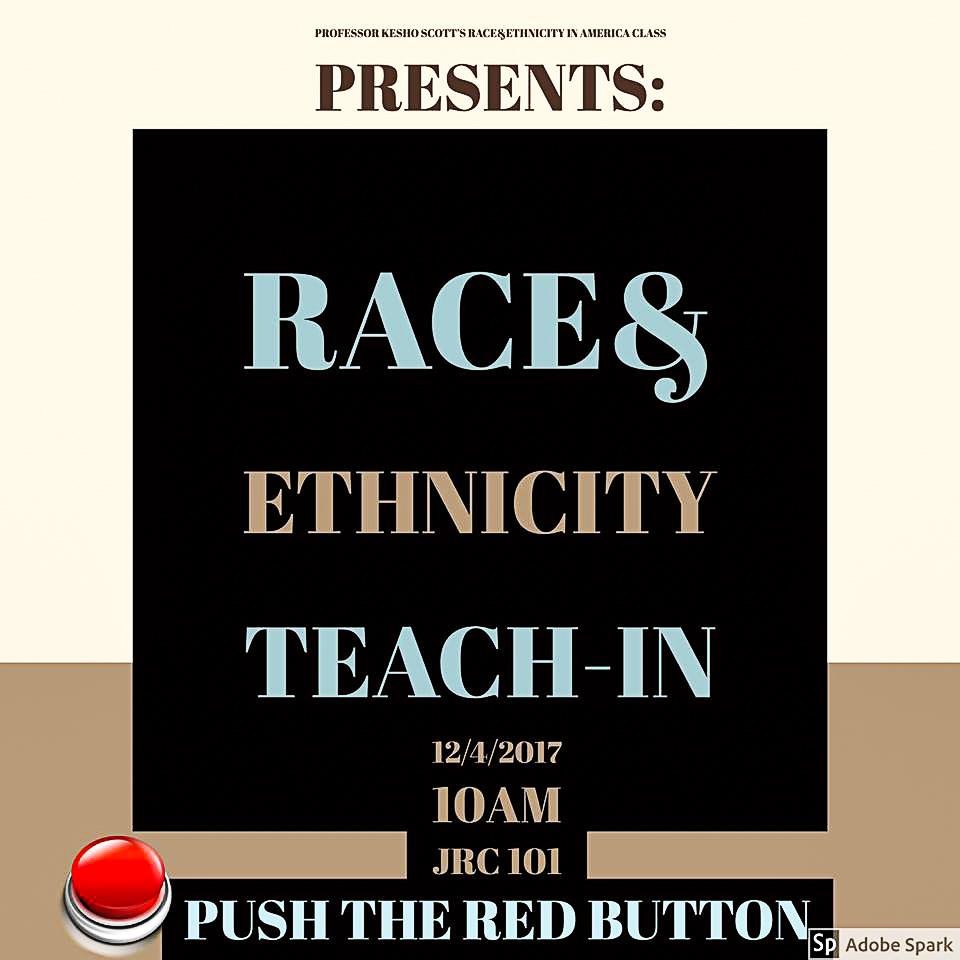
Activism requires two things, according to Professor Kesho Scott, sociology: first, being able to listen to someone and second, understanding where they are coming from. This will be the framework of Scott’s upcoming teach-in, in which both the student presenters and visitors will discuss race.
The teach-in will take place in JRC 101 on Monday, Dec. 4 at 10 a.m. and will be open to the public. It will function as the final project for the students enrolled in SOC-275: Race and Ethnicity in America.
Students will present on an underrepresented and minoritized ethnic group in the U.S., as well as explain specific race theories learned in the class.
For example, student Callum Scott ’18 will present on two topics, including a comprehensive look at Polynesian Americans and the question “where do white people come from?”
“[This question] is a way to ease someone into a conversation about whiteness and the construction of what it means to be white,” Callum Scott said.
The event will serve as much more than just a showcase of everything the students have learned, however. The teach-in provides an opportunity for students to apply their knowledge of theory and facts on race by holding discussions with anyone who comes.
“This is a point to educate people and get past the difficulty and awkwardness of conversations that revolve around race and ethnicity and oppression,” said Megan Christel ’20, one of the students enrolled in the course.
Another student from the course, Carrie Stallings ’19, described the difficulty of exposing some of the truth about racism to someone who believes it is no longer an issue.
“Through the journey of understanding race, they’ve come to a point where they’re ready to say racism is bad, but they have lines, and it’s about getting people to cross those lines and really become vulnerable,” Stallings said.
Although it is uncomfortable to talk about race, Stallings discussed why it’s important for everyone to be open about it.
“It’s about owning the fact that you’re uncomfortable and your ability to remove yourself from the conversation is coming from a place of privilege, because I can’t, … and this is true for all people of color,” she said.
A primary goal of the students will be addressing misinformation people may have about race.
“I think we all knew there was misinformation, but not to the degree to which there is,” Scott said. “One of the reasons why racism and prejudice and bias persists today is … misinformation.”
Challenging the internalized misinformation about racism that people harbor is a necessary step for students to take.
“We need to really talk about the economic, social and political factors and systems and facts within our country that made their experience the way it is,” Stallings said.
The students will be challenged to not attack listeners when relating what they have learned. This is something they have been working on since the beginning of the course.
“People can talk about differences in a civil and … respectful way if they realize they are talking about ideas and not people,” Kesho Scott said. “This is a necessary requirement, to be able to have contentious discussions with others about things as sensitive as race and racism.”
“Once you start to involve feelings, some people want to check out of the conversation,” Stallings said. “People don’t want to engage with someone they are viewing as emotional, unreasonable and irrational.”
Kesho Scott has confidence in her students’ ability to discuss race in America.
“[They will discuss] how we are all raced, how we all do an ethnic experience of one kind or another and how all of these things are framed within the context of capitalism,” she said, “and that means that is our family story, that it’s our personal story, and that is the story we are going to live in America.”





















































